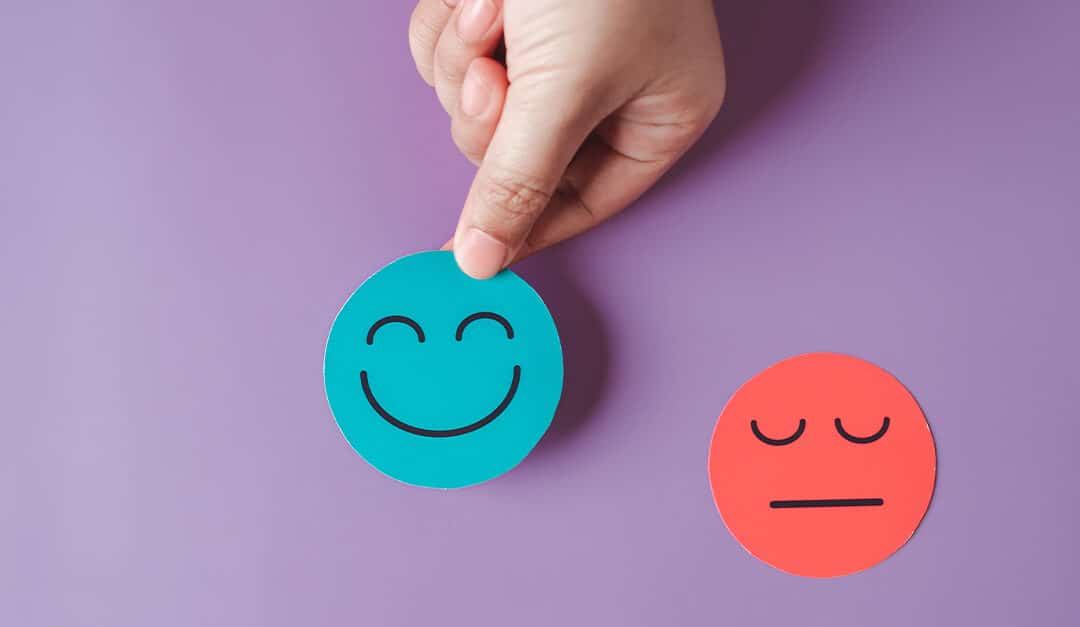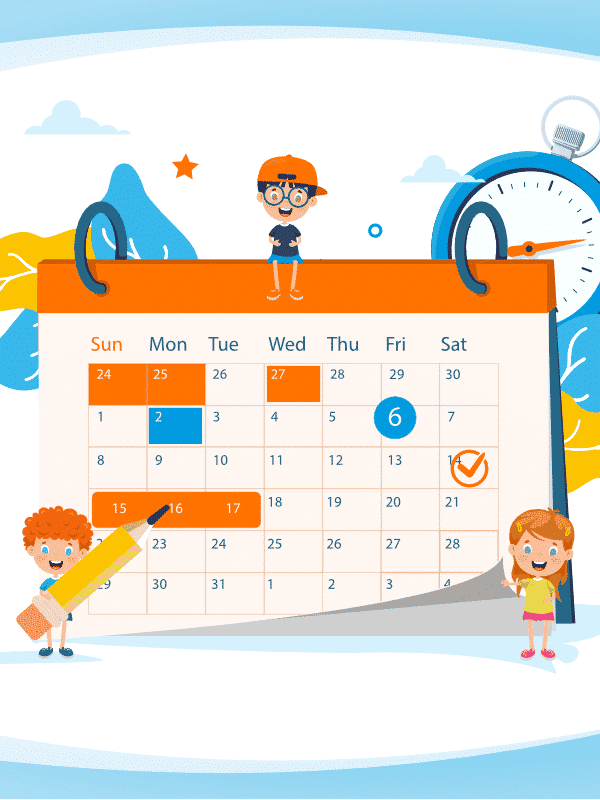Kids are always meeting new people, observing fantastic animals, trying interesting foods, listening to music, watching films, and immersing themselves in new stories. They’re basically in a constant exploration of the world that surrounds them.
As a result, they react to all of it with all kinds of feelings and emotions that might as well be new to them. Because they’re new in this world.
So it’s very important that we teach them to express these feelings and emotions. This is something you might already be teaching them. But you’re probably doing it in their mother tongue, which is perfect.
But let us advise you that your kids must also learn how to express their feelings and emotions in their second language. So, if they’re learning Spanish as a second language, we recommend they learn some Spanish for emotions.
To help you out, here are some tips on how to teach kids to use Spanish to talk about feelings and emotions.
Feelings and Emotions in Spanish
- Happiness – Felicidad
- Sadness – Tristeza
- Anger – Enojo
- Fear – Miedo
- Disgust – Asco
- Surprise – Sorpresa
- Safety / Security – Seguridad
- Love – Amor
- Joy – Alegría
- Gratitude – Gratitud
- Embarrassment – Vergüenza
- Enthusiasm – Entusiasmo
- Guilt – Culpa
- Envy – Envidia
- Curiosity – Curiosidad
- Hate – Odio
- Hope – Esperanza
- Disappointment – Decepción
- Frustration – Frustración
- Resentment – Rencor
- Boredom – Aburrimiento
- Confusion – Confusión
- Nervousness – Nerviosismo
- Astonishment – Asombro
- Worry – Preocupación
- Calm – Calma
- Tranquility – Tranquilidad
How to teach kids to use Spanish to talk about feelings!
Teach the verb to be
Besides Spanish words for emotions, you must teach your kids the verb to be in Spanish. It’s one of the most important things! This way they’ll feel more confident speaking in Spanish about their feelings and emotions.
You’ll also notice they sound more fluent when speaking about their emotions if they know how to use the verb to be in Spanish. All of this is because the verb to be goes hand in hand with expressing how you feel. So, never skip this highly important topic when teaching your children to express themselves in Spanish.
The verb to be in Spanish is divided in two verbs: “Ser” and “Estar”. “Ser” it’s used a lot with adjectives or descriptions of yourself or other things and people. For example:
- I am happy. / Soy feliz.
- I am Mexican. / Soy mexicano.
- I am beautiful. / Soy bonita.
- I am a Spanish student. / Soy un estudiante de español.
- She is intelligent. / Ella es inteligente.
“Estar” it’s used to say where someone or something is and the state in which that thing or person is. So it is used for emotions and feelings! This is the one your kids have to use to express their emotions. For example:
- I am happy. / Estoy feliz.
- I am nervous. / Estoy nervioso.
- I am afraid. / Estoy asustado.
- I am angry. / Estoy enojado.
As you can see, “estar” is the one we used with the words we taught you in the beginning of the blog, and the moods.
Teach them the phrase “Me siento”
Once they know the verb to be, especially the word “estar”, there’s another phrase they have to learn to speak about feelings and emotions. We’re talking about “me siento”… Which means “I feel”. This is great to tell others how you’re feeling. It’s also a very common phrase native speakers use all the time.
All you have to do is use the structure: “me siento” + emotion/feeling as an adjective. For example:
- I feel frustrated – Me siento frustrado.
- I feel calmed – Me siento calmado.
- I feel thankful – Me siento agradecido.
- I feel worried – Me siento preocupado.
Ask them in Spanish how they feel
Another great way to teach your kids to use Spanish is by asking them about their feelings and emotions in Spanish.
If they hear you asking them something in Spanish, they might feel more motivated and encouraged to answer back in Spanish. And if you want them to talk about their feelings, you have to ask them. You already ask them about it in their mother tongue, right? So you have to do the same but in their second language.
The most common and important question you can ask is: “¿Cómo estás?” (How are you?) So they can answer you with the verb to be “estar”, as we just saw above. Make sure they answer you with a complete sentence, not just with one word, like “feliz”.
Though it’s common to hear native Spanish speakers answer with just one word, giving a full answer will help your kids improve more and fully practice their Spanish and their fluency.
They must first learn and understand full answers, so later they know how and when to use one-word answers. For example:
- ¿Cómo estás?
- Estoy feliz.
- ¿Cómo estás?
- Estoy muy triste.
- ¿Cómo estás?
- Estoy nervioso por la exposición.
- ¿Cómo estás?
- Estoy avergonzado.
Speak in Spanish yourself
If you use Spanish yourself with your kids, they get used to hearing the language in their own home and from their own parents or tutors! This is great practice for them. Their ears will get trained, and their pronunciation, speaking skills and confidence will improve.
But what’s cooler is that they’ll feel more encouraged to speak in Spanish as well! Hearing you speak the language will make them feel happy to share the same language. Plus, they’ll know it’s a safe space to practice!
Sing in Spanish!
One thing that kids love with all their heart is music. Just think about all the cartoons and animated films that have songs they sing and dance to. Of how much they like to sleep to lullabies. And even on how you learned the alphabet as a kid: Through a catchy melody. Music is all around kids!
So, go to YouTube and look for Spanish songs about feelings and emotions. It’s such an important topic for children and humans that you’ll find different videos. Play the playlists and music videos over and over again.
Your kids don’t have to sit down to listen to the music all the time. They can also be doing something else, like drawing, while the song plays in the background. Little by little, they’ll start picking Spanish vocabulary for emotions. Soon, you’ll see them sing along, which will be great practice and a joyful activity.
Cons of Spanish Immersion Preschools
No after school hours in Spanish
Something good we can do for kids that are learning Spanish is to help them keep practicing throughout the day. This way they’ll reinforce their Spanish skills. But preschool only lasts some hours per day.
So kids only spend a few hours at school. Then they go back to their house, go to their extra-curricular classes, or go play with other friends. And usually everyone there speaks their mother tongue, not Spanish. So what happens to the kids when they don’t have a Spanish environment after preschool?
You could really see this as a disadvantage. Why would I enroll my kids in a Spanish school if I don’t have the skills to help them after school hours or during summer break?
But this has a solution. Even if you don’t speak Spanish, you could play songs in Spanish for them. Or watch a movie or Netflix show in Spanish with them.
Or maybe get a Hispanic nanny, go to Spanish events for kids in your neighborhood, and so on. Basically, find ways and tools to expose your children to the Spanish language that don’t involve you being fluent.
Even if you can’t do any of that, it’s always good to enroll them in a Spanish immersion preschool. Because even if you don’t speak the language at home, they’ll still learn and advance at school.
It’s better to learn a bit rather than learning no Spanish at all. Nonetheless, at an immersion preschool, they’ll learn more than a bit.
Mix vocabulary
Learning two languages at the same time won’t confuse kids, contrary to what many people believe. Nonetheless, every now and then they’ll mix some vocabulary from all the languages they’re learning and growing up with.
So, for example, if your kids are learning English and Spanish, you might hear them say some Spanish words when they’re actually speaking English.
You can see this as a disadvantage if you don’t want them to mix languages.
But let us tell you, it’s a completely normal part of their learning process. Mixing up words doesn’t mean your kids won’t ever learn vocabulary. Nor that they won’t learn the differences between Spanish and English.
They’ll be all right and they will learn both languages without confusion. They’re just learning to switch between languages.
How to Decide if Your Kids Should Go to a Spanish Immersion Preschool
Okay, but now you might still wonder: How do I decide if a Spanish immersion preschool is right for my kids?
There are a few things you can do:
- Put the pros and cons of a Spanish immersion preschool in a balance. Are there more pros or cons? Do the pros really look that beneficial for my children, so much that they outweigh the cons? Are the cons highly damaging for my kids?
- Is there a specific and important reason you want your kids to learn Spanish? Or is there another language they need more? Maybe the whole family is French, and you want them to study university in France one day. Then maybe they should learn that language instead. ´
- Are the Spanish immersion preschools near your area good enough and have qualified teachers? This is something you should definitely research profoundly. Ask the schools if they have trial classes or if you can meet up with them to ask all your questions.
- Another important thing is that you have to be patient with your kids. Of course, this skill applies for all aspects of raising a kid, right? But it’s also very important when it comes to learning a second language. They won’t become fluent overnight.
TruFluency Kids Helps Your Kids Express Themselves
We have native teachers ready to instruct your kids through all kinds of fun activities. During our lessons, students sing, dance, do crafts, read, and even cook in Spanish! So your kids won’t get bored at all.
All our classes are based on the Bellieu Method, created by our founder and CEO, Micah Bellieu. Through it we encourage kids to speak in EVERY SINGLE LESSON! All in a safe space to make mistakes. This is the best way to achieve Spanish fluency.
The best of all is that our classes are completely online, and we have flexible schedules. So your kids can study with us no matter where they are. Sign up your kids for our next four-week session!


